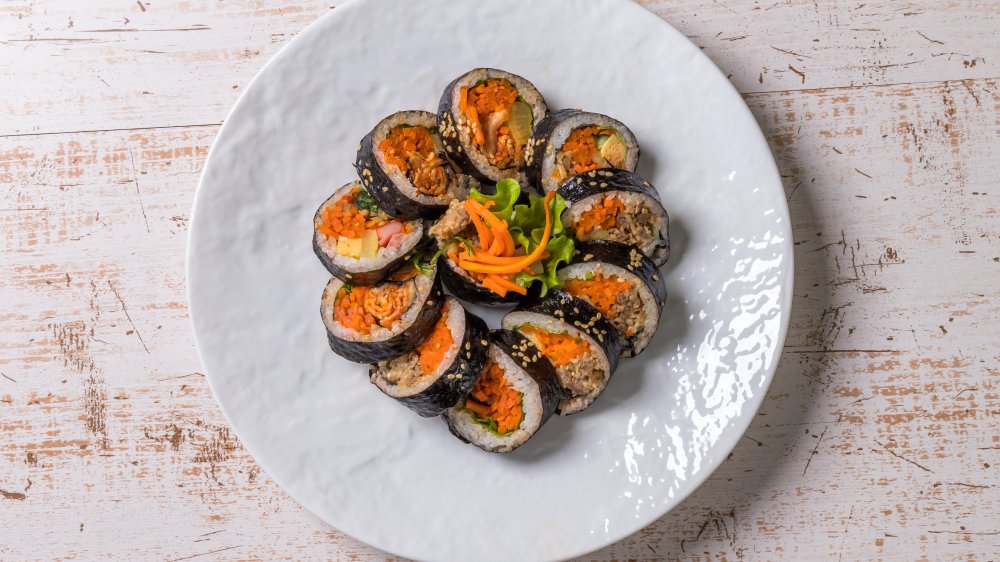You Should Never Store Kimbap In The Fridge. Here's Why
Kimbap, also known as Korean sushi, is essentially a dish that has a mix of several ingredients like seaweed (kim), rice (bap) coupled with other ingredients such as meat, spinach, eggs, fishcakes, and cucumbers. According to Taste Atlas, there are three major types of kimbap with a bunch of variations. For example, classic kimbap has rice, seaweed, and other ingredients but French kimbap has rice on the outside and seaweed on the inside. The third variant is called Samgak kimbap and is mostly found in convenience stores across South Korea. This triangular product serves as a quick, handy snack with meat, veggies, and rice (via 10 Magazine).
However, if you decide to not finish kimbap in one go or choose to recreate the dish at home and are thinking of storing your meal in the fridge, you may want to think again. Storing kimbap in the refrigerator is not the best idea. Read on for all the details.
Putting kimbap in the fridge changes the flavor
The answer as to why is very simple. The problem with storing kimbap is the fact that it has large amounts of rice. As explained by a commentator on Reddit, storing rice for several days in the fridge makes it a bad idea. The commentator wrote, "The vinegar in the pickled radish will have a slight preservative effect, but it's generally not recommended to store cooked rice for more than about four days due to the fact that it has an enormous amount of surface area that fosters the growth of bacteria."
Another Reddit user pointed out that an easy solution for the dilemma, suggesting that they should prepare the fillings in advance and store them in the fridge and just make a fresh batch of rice whenever they intend to use the fillings while preparing kimbap. This worked out well for the home chef in question and only took them about ten extra minutes. Win-win!

